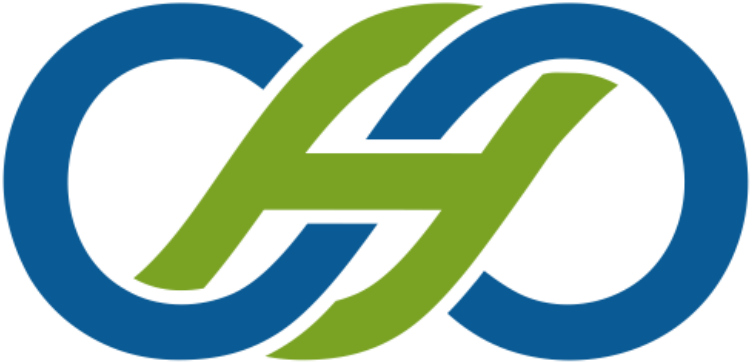(Original Article) Thanks Wordstream!
In short: yes. Why does Facebook advertising work?
According to data from Pew Research Center, 70% of U.S. Facebook users access the site daily and 43% log on multiple times per day. 82% of the millennial demographic are among the most engaged Facebook users. Further, Facebook ads generate 22 billion clicks per year with a reach of 1.6 billion active monthly users.
Not only do Facebook ads have extensive reach already, Facebook itself continues to grow. By utilizing the data on active Facebook users, you can access thousands of custom audience parameters to create targeted audience segments for your campaigns. You can also create custom audiences by uploading data on existing customers that you already have, which enables Facebook to create “lookalike” audiences based on parameters that you choose. These ads can drive quality traffic—social advertising allows your business to seek out prospective customers in a unique way that is not possible through paid advertising.
Additionally, Facebook Advertising is one of the most cost-effective platforms available. According to Salesforce, the overall Facebook CPM in the US decreased from Q4 to Q1in 2014-2015, while CTR increased to 0.9%, indicating a healthy engagement with the ads.

How to Advertise on Facebook / Facebook Advertising Guidelines
- Before creating any Facebook ad campaigns, have a clear objective or goal for your Facebook advertising, i.e. lead generation, branding, event sign-ups, product awareness, loyalty, insights. Determining these goals will help you measure your success after launching your Facebook ads.
- Think about how you want to present your brand through your ads. Make sure it is authentic to what your business offers and represents. This will help create relevant ads, which can generate better quality traffic.
- Identify which aspects of your brand are intrinsically social—what will make your audience want to engage with your ads on a social platform?
- Don’t let your Facebook ad content go stale. Refresh your images and ad copy frequently, keep it simple and try to reward your customers for their loyalty to establish relationships.
- Use the reporting tools at your disposal from Facebook to learn more about your audiences and the content they are most interested in. As you learn, adjust your ads to be more relevant for each target audience.
Facebook Advertising Costs / Facebook Ad Pricing
Costs of advertising on Facebook vary, just like that of other forms of paid advertising. With a focused goal and simple strategy, Facebook advertising can be extremely cost effective. WordStream can help guide you through the basics of Facebook campaign optimization through our free guides and this tool.
There are average costs associated with advertising on Facebook as well as different ways your account can be charged. Within your objective, you can select to pay per impressions, pay per link click, pay per thousand impressions, or simply have your ad served to your audience once per day.
According to AdWeek, the average CPC on Facebook is $.064 and the average CPM is $5.99. This accompanies a CTR of 0.9% on Facebook Ads, 0.6% CTR on mobile app install ads. However, following best practices and easy Facebook advertising guidelines, we have been able to get CPC as low as $0.05 and cost per conversions down to $2.00.
How to Create Effective Facebook Ads
- Use Power Editor. Its ease of use will can allow you to build and set multiple Facebook ad campaigns live all at once. It also simplifies duplications to take the headache of repetitive tasks out of the way.
- Consider the size of your audiences. Your ability to stay relevant (to an extent) is extremely important when looking at Facebook costs. Use the tips below to build the best audiences:
- Start with remarketing
- Build lookalikes off of remarketing
- Combine these two or use interests, behaviors, and demographics to construct a relevant audience toward your previously defined objective
- Focus on the value proposition of your promotion when building Facebook audiences manually (using interest/ behaviors). You can then work backward to target the people that it would benefit the most highly. Try to hit a sweet spot with the audience—reach and costs will be directly correlated to audience size and, ultimately, the relevance and quality of your ad.
- A/B test ad sets and ads using multiple targeting combinations and ad copy – optional use of multiple images and messaging. After they run for a period of time you can go into each and optimize by allocating budget to higher performing ads and cutting out the lower performers.
- Identify the placements in each ad set that are driving the highest, best quality results. You can break the ad set up further (using power editor) and have individual budgets for specific placements. For example, if the desktop newsfeed is driving more leads than the app network and mobile newsfeed. You can break out that placement and devote all of your budget to the desktop newsfeed. Facebook will automatically optimize and pay more attention to higher performing placements. This can be deceiving; for example, in a web clicks campaign you could drive high traffic from the app network, but in reality these clicks are accidental. Facebook will think that particular placement is the highest performer and shift to spend more money there.
Facebook Ad Types
Facebook Advertising campaigns have a variety of formats which can push your different objectives. The best way to find which ad type is right for you is to first examine your business goals:
- Page Post Engagement and Likes: Boost your posts to garner more likes. Promote your page to connect with more people who matter to your business.
- App Installs and Engagement: Facebook Advertising allows a user to install an app straight from an ad, which increases the engagement within your app.
- Local and Brand Awareness: Reach people in the area, or reach people who are more likely to become customers of your brand.
- Event Responses: Effective Facebook Ads can raise attendance at your event.
- Lead Generation: Easily collect leads for your business by advertising on Facebook.
- Video Views: Create ads that entice more people to view your video.
- Product Catalog Promotion: Show products from a catalog to people most likely to be interested through a targeted audience.
- Clicks to Website and Website Conversions: Send people to your website through Facebook ads as well as increase conversions; these can be tracked through a conversion pixel.
- Offer Claims: Generate offers for people to redeem in store

Facebook Ad Targeting Options
- Life Events: The Life Events parameter in Facebook Advertising is unique to the platform, allowing you to target people at specific intervals of time after the event takes place; i.e. a year after getting married, 3 months after starting a new job, etc.
- Recent Purchases: Facebook allows you to take advantage of past purchase behaviors to target people broadly, i.e. Clothing, Food & Drink, Health & Beauty, to more specific subcategories, i.e. Fashionistas, DIYers and Foodies.
- Custom Audiences: Advertisers can upload existing contacts onto the Facebook platform to create audiences and get in front of customers in a new way; this is a great opportunity to nurture leads and build loyalty with existing customers.
- Lookalike Audiences: After establishing a custom audience, Facebook can help you generate new audiences that have similar interests to the existing contacts. If you do not have contacts to create a custom audience, you can use your Facebook fan base or tracking pixels to create custom audiences to imitate.
- Layered Targeting: Because Facebook has such a stock of information on its user base, it is able to offer many options to target the perfect audience, i.e. Household Composition, Net Worth, Interests, Behaviors, etc. Using these together, you can generate a highly specific segment to which you can serve ads.







